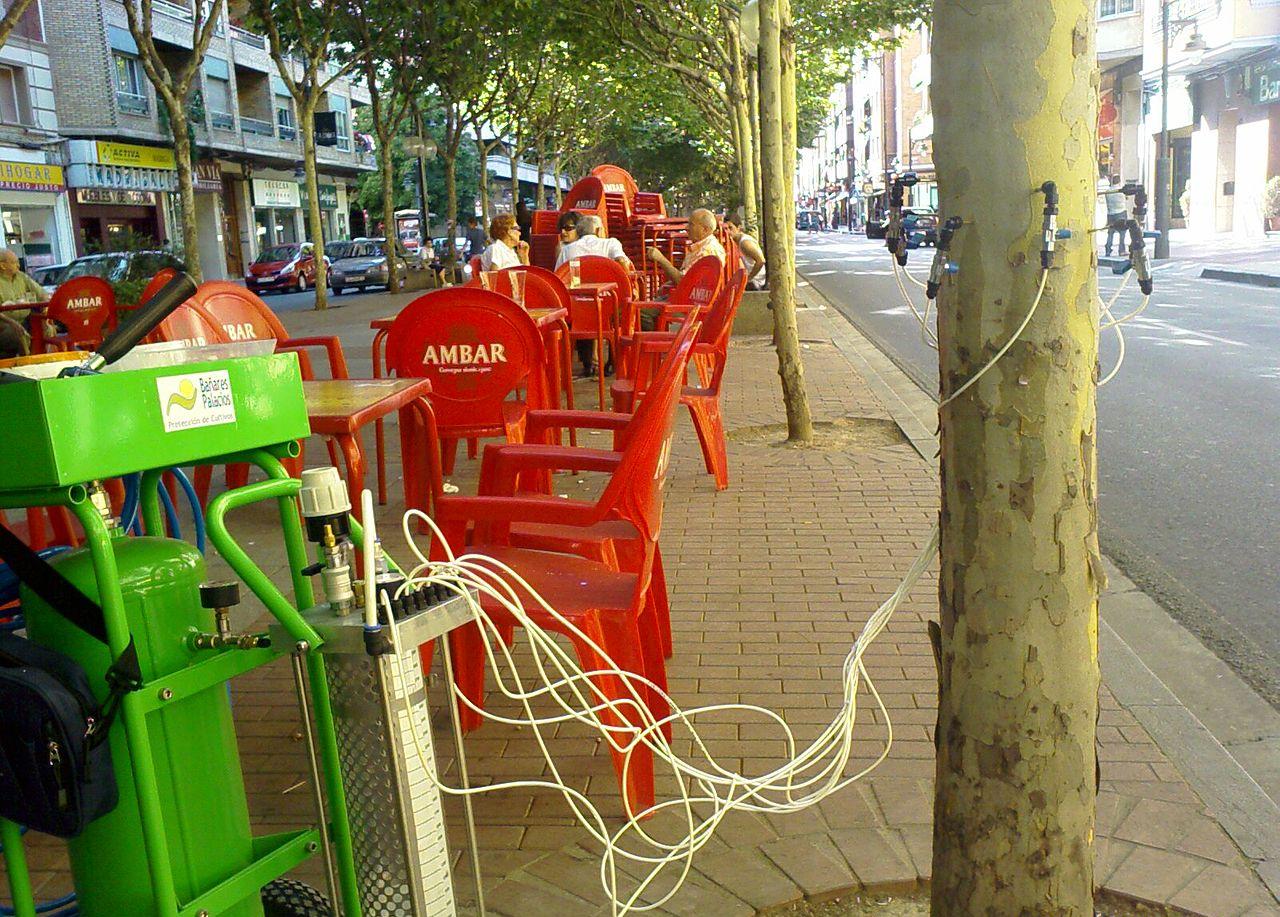

The plant endotherapy It is a very interesting phytosanitary treatment, especially when it comes to treating trees and palms that live in urban centers and that, for whatever reason, have become ill or are victims of a major plague.
And it is not only good for them, but also for humans. In fact, anyone can walk past the plant while it is receiving its ‘medicine’, and without using any protective measures! Let’s know what it consists of.
What is plant endotherapy?


Image – Typesde.eu
Explained in a nutshell, plant endotherapy It is a phytosanitary treatment which consists of injecting the phytosanitary product (insecticide, fungicide, acaricide, …) or nutritional substance to the trees and palms by vascular route; more specifically, directly to xylem. Xylem, or wood as it is also known, is a lignified tissue through which liquids are transported from one part of the plant to another.
It could almost be said that those who are in charge of carrying out this type of treatment are doctors because, like them, they inject the substance that can save their lives into a ‘vein’. But that is why it must be borne in mind that, for it to be effective, it is important to know well the xylem, as well as the problem that the plant in question has. In this way, you will be able to know what it is that you really need.
What are its advantages?
The advantages are few but very interesting, especially and as we said at the beginning, if plants that are in public and / or heavily traveled places have to be treated. For instance:
It is effective against multiple pests and diseases


Image – Flickr / sherca
It is widely used against the pine processionary, the red palm weevil, aphids, trunk and / or branch boring insects, leaf miners, white flies, mealybugs, defoliators, and a long etcetera.
It does not affect the fauna or flora
The product is injected into the trunk, so neither sprays nor nebulisations are necessary. Thus, it is guaranteed that the ‘plant medicine’ will only be received by the plant that needs to be treated, without putting others or herself at risk.
It is not necessary to take excessive protective measures when applying it
When you are going to use a phytosanitary product of chemical origin, many times the label tells you that you should wear gloves as a minimum, and sometimes even glasses and special clothing. Well, with endotherapy this does not happen. Putting on disposable gloves to avoid contaminating the equipment is more than enough.
No water consumption
Water is a very precious commodity (or it should be). When you are going to perform a plant endotherapy treatment, you do not need water, with which, you can help to take care of the environment and natural resources in your area.
The product persists in the plant
Has it ever happened to you that you applied an insecticide one day, for example, 3-4 days passed and you did not notice that it had much (or no) effect? If during that time it rains … goodbye to the treatment. With endotherapy this will not happen to you. From the first moment in which the xylem does its work, that is, it transports the liquid to the rest of the plant, it will begin to take effect.. And the thing will not change until you have absorbed all the substance.
Types of endotherapeutic methods
Depending on how they are done, three types of methods have been developed:
- By gravity: holes are made in the trunk of about 4mm in diameter and leaving a separation between them of 30-40cm, at a height of 80-100cm from the base of the tree. The pressure that must be exerted when injecting the product is 0,2 bar, and between one injection and another, between 20 minutes and 24 hours must pass.
- By micropressure: the holes must be made in the neck of the tree, they must measure about 4mm in diameter and there must be a distance of 12-15cm between them. The pressure will be 0,5 bar and the ‘medicine’ will be injected every 20 minutes to 24 hours.
- By pressure: holes between 3,5 and 6mm in diameter will be made, leaving a separation of 3-4 centimeters between them, and at a distance of 80 to 100 centimeters from the base of the plant. The time between one injection to another will range from 3 to 30 minutes.
What do you need to perform a plant endotherapy treatment?


You basically need the following:
- Endotherapy kit: this will include a special syringe, connectors, and container which will contain the phytosanitary product.
- Phytosanitary product: insecticide, fertilizer, …
- Drill: with a small drill bit (no more than 6mm) to pierce the trunk of the tree or palm trees.
NOTE: in some cases the drill will not be necessary, depending on the kit. - Gloves: disposable ones, with which you can keep all the equipment clean.
- Some knowledge: understanding where the xylem is and which product to use in each case is essential for this treatment to be effective. In fact, it is highly recommended to take a course of endotherapy.
We hope it has been of interest to you.
